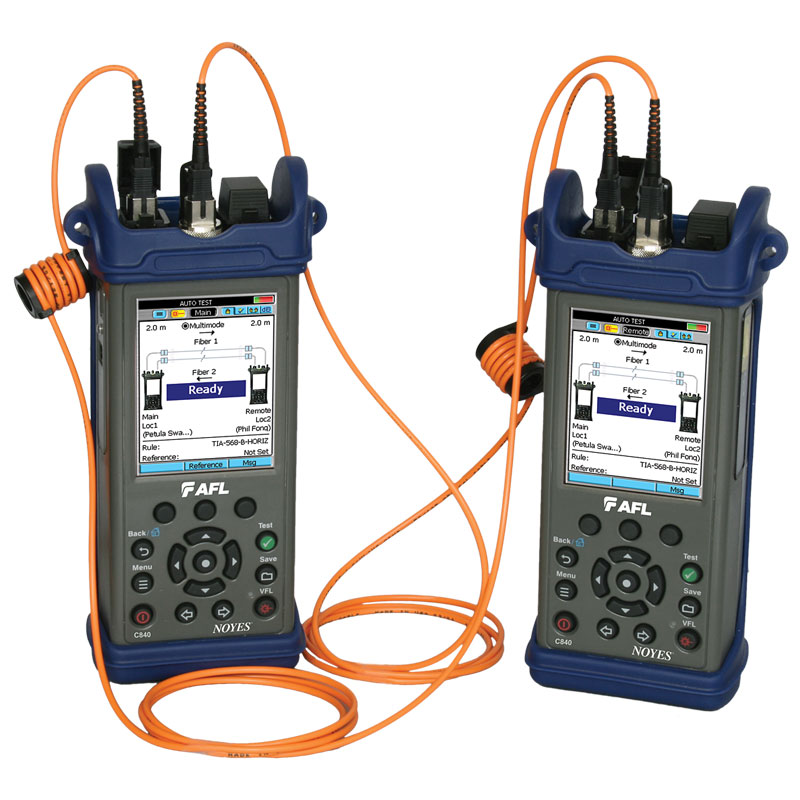The use of ofda enhances fibre evaluation with innovative optical technology.
Discovering the Perks of Optical Fiber Checking for Improved Interaction Equipments
The relevance of optical fiber testing in contemporary communication systems can not be overemphasized, as it serves as a foundation for making certain network integrity and performance. This positive screening strategy has profound implications for signal quality and operational performance, elevating the concern of just how these methods add to long-lasting sustainability in an ever-evolving technical landscape.
Significance of Optical Fiber Screening
The significance of optical fibre testing can not be overstated in today's data-driven atmosphere. As companies increasingly rely upon high-speed data transmission for everyday operations, the honesty and performance of optical fiber networks are extremely important. Examining ensures that these networks can support the substantial amounts of information produced and transmitted perfectly, promoting reliable interaction and connectivity.
Optical fiber screening offers numerous essential features, consisting of verifying setup quality, recognizing potential faults, and figuring out general system performance. Regular testing can protect against costly downtimes and solution interruptions, permitting organizations to preserve operational connection. It helps in conformity with market standards and regulations, making certain that fibre optic installations fulfill required requirements for safety and integrity.
Additionally, screening can enhance the durability of fibre optic systems. By proactively determining problems such as signal loss, attenuation, or adapter failures, organizations can deal with problems prior to they escalate, therefore extending the life of their facilities. In summary, optical fibre testing is not merely a technical need however a calculated investment that improves network dependability, enhances efficiency, and inevitably sustains the growth and effectiveness of contemporary communication systems.
Secret Testing Methods

OTDR is a vital method used to determine faults, measure splice losses, and examine the general honesty of a fibre optic web link. By sending out a pulse of light down the fiber and assessing the mirrored light, technicians can pinpoint areas of mistakes and examine the network's efficiency over cross countries.
Insertion loss screening determines the quantity of signal loss that occurs when light travel through a link or splice. This technique is critical for validating that connections meet specific loss limits, which is crucial for keeping optimal efficiency in communication systems.
Optical return loss testing measures the amount of light mirrored back towards the source due to imperfections in the fiber or connections. High return loss values indicate better efficiency and minimized signal destruction.
With each other, these screening approaches offer a comprehensive analysis of fiber optic networks, ensuring their dependability and performance in varied interaction applications.
Effect On System Performance
Effective optical fiber testing straight linked here affects the general performance of interaction systems. By making certain the stability of fiber optic cords, screening identifies prospective mistakes such as depletion, splice loss, and adapter misalignment. These issues can considerably weaken signal top quality, causing disturbances and reduced information transmission speeds.

Additionally, routine optical fibre testing contributes to lasting system sustainability. It allows very early discovery of damage, enabling prompt maintenance and upgrades before significant failures occur. This not only prolongs the lifespan of the infrastructure but likewise makes sure that communication systems continue to be affordable in terms of performance.
Cost-Effectiveness and Efficiency
Cost-effectiveness is a critical factor to consider in the release and upkeep of optical fiber networks. Implementing robust optical fiber testing procedures can considerably minimize functional prices by identifying problems prior to they rise right into major problems. optical fibre diameter analyser. By discovering mistakes, attenuation, and various other performance barriers early, organizations get more can prevent expensive fixings and downtime, which can disrupt services and lead to income loss
Moreover, reliable screening techniques improve the installation process, permitting service technicians to work better. This translates to reduce work costs and faster job conclusion times. Advanced screening equipment, such as Optical Time Domain Name Reflectometers (OTDRs), makes it possible for an accurate evaluation of fibre high quality, making certain that only optimum products are utilized, consequently minimizing waste.
Normal screening likewise adds to much official source better resource appropriation. By understanding the network's performance, organizations can make enlightened decisions about upgrades and developments, making certain that investments are made where they are most required. In summary, optical fibre testing enhances cost-effectiveness and performance, sustaining the long-lasting sustainability and competitiveness of communication systems in a progressively demanding market.
Making Certain Long-Term Dependability
Carrying out rigorous optical fiber screening not only boosts cost financial savings and operational performance however additionally plays an essential function in ensuring the long-term integrity of interaction networks. Constant screening techniques, consisting of attenuation and transmission capacity analyses, help identify prospective deterioration in fibre efficiency before it causes solution disturbances.
By utilizing advanced testing approaches, network drivers can identify faults or weaknesses in the fibre framework, permitting for prompt removal. This aggressive method minimizes downtime, ensuring that communication systems continue to be useful and reliable. Normal screening adds to the advancement of a much more resilient network, as drivers can adjust and enhance their facilities based on real-time information understandings.
Additionally, making certain conformity with sector criteria through optical fibre testing strengthens the high quality and stability of the whole communication system. This adherence not just boosts confidence among stakeholders yet additionally lines up with regulatory demands, which are significantly rigorous.
Final Thought
To conclude, optical fibre testing works as an essential element in improving communication systems. By using various screening approaches, such as OTDR and insertion loss assessments, networks can achieve optimal performance and integrity. The positive recognition of faults not just enhances signal top quality however likewise decreases downtime, ultimately contributing to cost-effectiveness and functional effectiveness. Adherence to market requirements cultivates stakeholder self-confidence, ensuring the long-term sustainability of communication facilities in a significantly data-driven landscape.